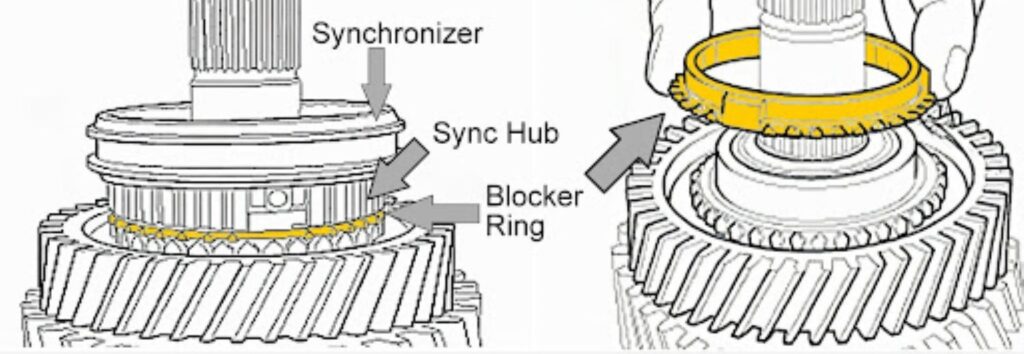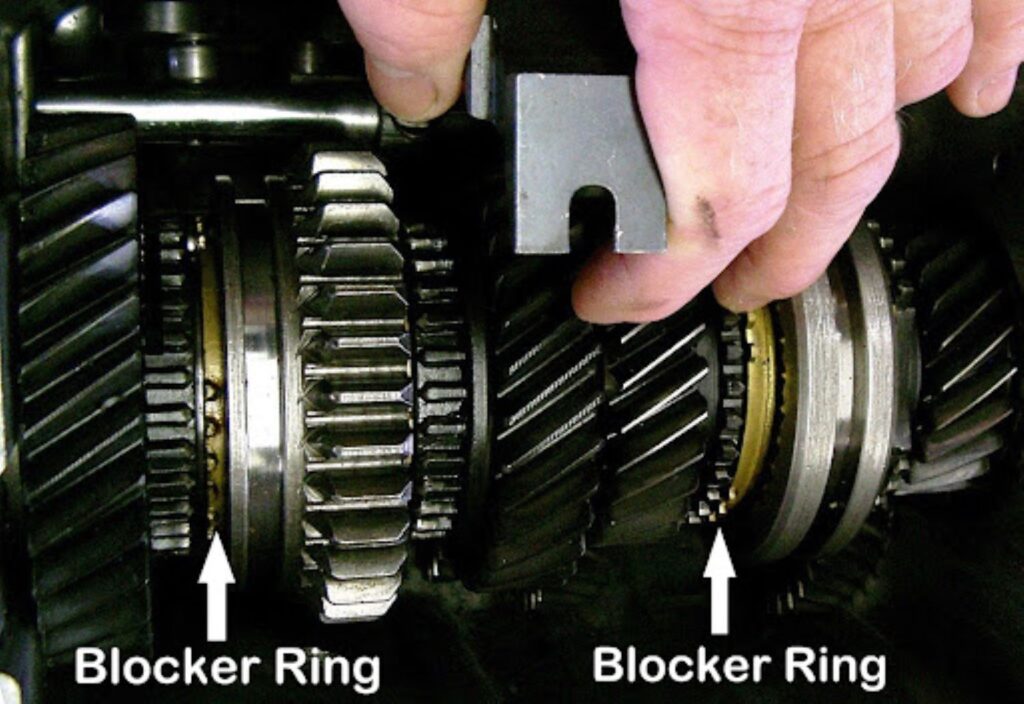Transmission synchronizers allow quick, seamless shifts between gears. Without synchronizers in a manual transmission, shifting gears would be a clunky experience. But how do transmission synchronizers work? Are they really important?
Essentially, transmission synchronizers are like clutches between gears. To fully understand how a transmission synchronizer works and its role in transmission, we need to briefly discuss how a transmission switches gears.
How A Transmission Shifts Gears
In a transmission, there’s an input shaft that’s connected to the engine. On the other end is an output shaft that’s connected to the wheels.
In most manual transmissions, the gears along the output shaft are meshed into gears called the countershaft. These two gears create a predetermined gear ratio that allows transmissions to multiply the torque that the engine creates. It also allows the output shaft to have a slower rotation speed than the input shaft, which typically spins much faster because of the engine.
A vehicle typically must run through most, if not all the gear ratios to be able to reach highway speeds. The challenge of shifting gears is that the input shaft must be connected to the output shaft through the gear that’s spinning at the correct rotation speed.
What’s the Purpose of a Transmission Synchronizer?
The transmission synchronizer is responsible for allowing the transmission to shift seamlessly without excessive vibrations, noise, and wear. To shift to a gear, a slider called the shift sleeve must disengage from one output gear and slide to the next output gear. To do this seamlessly, the shift sleeve must first match the output gear’s rotation speed so that their teeth don’t grind together. The transmission synchronizer is the component responsible for matching the speeds of these two parts.


How Does a Manual Transmission Synchronizer Work?
A transmission synchronizer is a system that mainly uses a part called a blocker ring. The blocker ring spins with the shift sleeve and has a coned surface. The blocker ring’s cone’s surface matches the shape of a cone surface on the output gear, which is called a synchronizer cone.

When the shift sleeve is forced to the output gear, the blocker ring’s cone and synchronizer cone are forced together. As they create friction, they act like a clutch that spins the output gear. As more pressure is applied, the output gear will eventually spin at approximately the same speed.
Aside from matching the rotation speeds of the two parts, the synchronizer’s blocker ring also has gears that guide the shift sleeve onto the gears of the output gear. Overall, the synchronizer allows the shift sleeve to seamlessly mesh into the output gear.
What Are the Benefits of a Transmission Synchronizer?
Without a synchronizer cone and blocker ring, the fast-spinning shift sleeve will be forced into the slower output gear. This is why transmissions that didn’t have synchronizers were equipped with dog gears, which were two opposing gears with large squared teeth. However, one side had smaller teeth, so the two opposite gears didn’t need to align perfectly to mesh together. These dog clutches were meant to join the two gears by simplifying and disrupting the momentum of the other gear.
As you can probably imagine, this created a lot of wear on the components and produced a grinding noise. Drivers needed to perform a technique called double-clutching. This technique involves pushing the clutch pedal, shifting to neutral, and then revving the engine before pressing the clutch again and shifting into the next gear. This was done so that the input shaft and shift sleeve would spin roughly at the same speed as the output gear. As you could probably guess, shifting seamlessly without a manual transmission synchronizer was difficult.
Overall, synchronizers are necessary to achieve smooth and efficient gear shifts in manual transmissions. By seamlessly matching the rotation speeds of the shift sleeve and output gear, the synchronizer blocker ring eliminates excessive vibrations, noise, and wear. The evolution from dog gears to the sophisticated synchronizer enhanced the overall driving experience and made clunky gear changes a thing of the past.
Any information provided on this Website is for informational purposes only and is not intended to replace consultation with a professional mechanic. The accuracy and timeliness of the information may change from the time of publication.































Synchronizers are nice, and necessary for anyone that learned to drive a manual transmission within the last 50 or 60 years. Those of us old enough to have learned to drive before that learned to do it for ourselves both on the upshift and downshift. Not much necessary today, as try to find a real car; let alone one with a standard transmission!!!